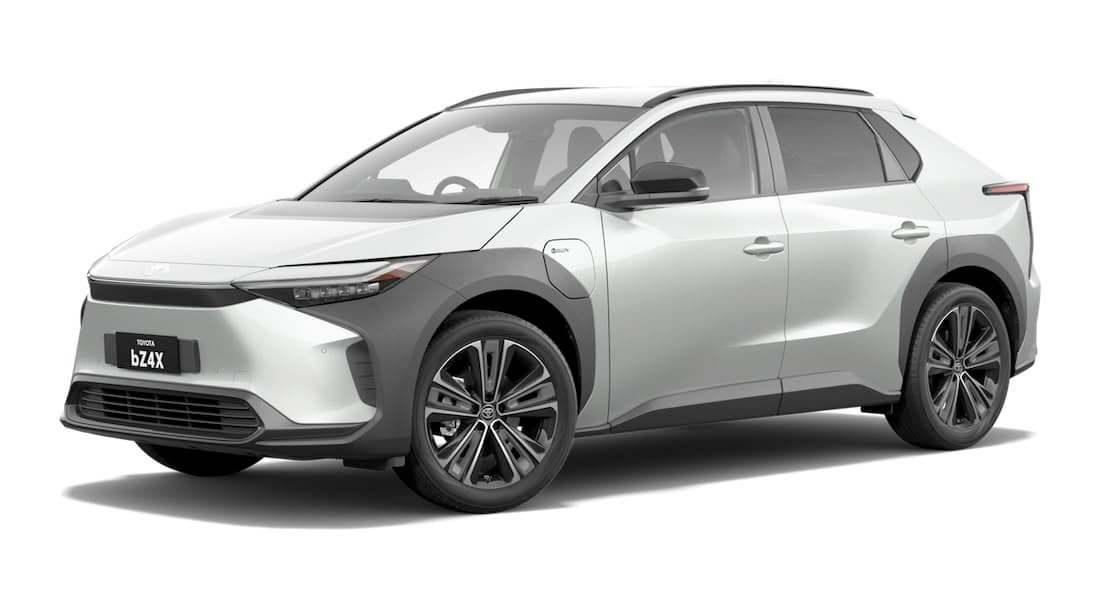Toyota bZ4X

Price Range
$57,990 - $65,990
Range (WLTP)
411 - 436 km
Battery Size
71.4 kWh
Variants
Please note that Toyota NZ lists an NEDC range of as much 535 km in their specs. This is different from the standard WLTP assessment of range (and tends to considerably overestimate range). The range and efficiency specs listed here are based on European homologation data for WLTP range and efficiency.
Performance
0-100 km/h
7.5 sTotal Power
150 kWTorque
266 NmTop Speed
160 km/hDrive
FWDRange & Efficiency
WLTP Range
436 kmWLTP Consumption
169 Wh/kmHighway Range
340 kmYour Real Range
Calculate Battery & Charging
Battery (nominal)
71.4 kWhBattery (usable)
64 kWhBattery type
NMCAC Charging
11 kWDC Charging
150 kWVehicle-to-Load (V2L)
NoDimensions & Weight
Length
4690 mmWidth
1860 mmHeight
1650 mmGround Clearance
182 mmWeight
1940 kgShape
Medium SUVSeats
5Storage & Towing
Boot Space
452 LBoot Space (Max)
—Frunk
—Towing (Braked)
750 kgTowing (Unbraked)
750 kgHow many Toyota bZ4X have been sold in NZ?
There have been 317 registered to date (all NZ new).
Toyota bZ4X registrations
Monthly units (includes new and used import)
